A Literary Shelter for Misfit Dolls; Exploring Doll Play in Wilder, Dickens, Little Women, Burnette, and Eliot
Ellen M. Tsagaris, Ph.D.
When you loved the people of the world, you loved their dolls . . .
Anne Rice, Taltos.
Dolls have existed since the Stone Age and appear often in literature, but the literary signifcance of doll play has not been addressed. “Literary Dolls” are often bedraggled examples of their kind that would be at home on Rudolph’s Island of Misfit Toys. Yet, children love them because, like them, their dolls are imperfect. Laura’s doll in Little House in the Big Woods, a handkerchief wrapped corncob, is both an object of pity and a beloved toy. Dicken’s Jenny Wren repairs dolls to find the perfect form her own crippled body denies her. Beth’s dolls in Little Women, especially Joanna, are surrogate children and confidantes. Painfully shy, Beth can relate with her dolls as imaginary companions in ways she cannot interact with real children. Sarah Crewe’s proverty and privation as an orphan are shared by her doll Emily, her only companion when she loses her fortune and is reduced to being a servant at Miss Minchin’s Academy. Maggie’s doll in The Mill on the Floss is a “fetish” that takes all of the abuse the frustrated Maggie cannot heap on her oppressors, yet remains a faithufl confidante and compantion. If dolls are made in the images of their makers, they are also extension of their owners, and the image magic they recreate is often found in extensions of their owner’s lives, fears, and dreams.
Baudelaire: “A Philosphy of Toys”: Baudelqaire writes that “ the whole of life exists” in a “great toy shop” and it is “far more highly sparkling and polished than real life.” Those who love films like Mr. Magorian’s Wonder Emporium would probably agree with him. Dolls and toys represent life in miniature, brought to a scale and level that children can understand. A child’s life extends through the life of her toys, and her imagination animates them, as Andy’s does in the Toy Story Films. For a child, her dolls are her companions, portraits, actors in her plays, and scapegoats for her miseries.
Little Women, 1868, one year after my Great-Grandmother and Laura Ingalls Wilder were born: Nowhere does the doll represent an extension of her owner than in Alcott’s Little Women. Since the book was written, there have been hundreds of doll representations made of the characters, in paper and 3-D form, in all media. There are also many other works or art, both serious and kitschy, that immortalize them, as well as several films and TV series. Alcott herself was 13 when Charlotte Brontë died, and was aware of Jane Eyre. There, Brontë writes of the importance of dolls as companions to children, and the orphan Jane only has her doll to comfort her in the desolation of the Reed house.
The March girls do not have many toys, but they have their games, pastimes, and theatrical play. Beth is the only sister described as having dolls. Thirteen year-old Beth March is the shyest of the four March girls. She loves her pets, her six misfit dolls, and her music. Anne K. Phillips writes in “Toys, Games, and Play in Little Women” that given the family’s poor economic status, six dolls seem “ a surprisingly large number of toys” (407). Beth is a juvenile “Angel of the House,” and at thirteen, is her mother’s best companion. He helps with household chores, but is still very much a child who cares for her sisters bedraggled, broken, and cast out dolls. She often saves them from the trash or ragbag. The following description describes the relationship Beth has with her dolls:
Beth was too bashful to go to school . . . She was s housewifely little creature . . . not lonely nor idle, for her little world was peopled with imaginary friends . . .There were six dolls to be taken up and dressed every morning, for Beth was a child still, . . . not one whole or handsome one among them; all were outcasts till Beth took them in; for when her sisters outgrew their idols, they passed to her . . . Beth cherished them all the more tenderly for that very reason, and set up a hospital for infirm dolls. No pins were ever stuck into their cotton vitals; no harsh words or blows ere ever given them, no neglect ever saddened the heart to the most repulsive, but all were fed and clothed, nursed, and caressed, with the affection which never failed. One forlorn fragment of dollanity had belonged to Jo; and, having led a tempestuous life, was left a wreck in the ragbag, from which dreary poorhouse it was rescued by Beth, and taken to her refuge. (Alcott 35).
Alcott goes on to write that the poor doll has no top “to its heard” and “both arms and legs were gone, she hid these deficiencies by folding it in a blanket, and devoting her best bed to this chronic invalid. (35). Beth lavishes more love on this doll than on the others, and brings it “bits of bouquets,” reads to it, takes it for walks, “hidden under her coat,” and sings it lullabies, kissing “its dirty face, and whispering tenderly,” I hope you’ll have a good night, my poor dear” (35). Significantly, this doll is named Joanna. Later, when Beth is terminally ill, Jo will care for her as tenderly as Beth cared for the bedraggled Joanna. As Phillips observes, none of Beth’s play is “orchestrated by Marmee: Beth chooses this activity, and her dedication to the dolls is supported by her sisters” with Jo making sure there is a clear path, even in winter, so that Beth can take Joanna on her daily walks (408). Doll play suits the nurturing Beth, who is, ironically the most motherly of all the sisters, though she will never experience motherhood herself (408)
Indeed, there are many Victorian and Edwardian stories of dolls that have lead rough lives, only to be saved in some manner and given a new lease on life. Raggedy Ann manages to keep her smile “despite entanglement in laundry wringers, entrapment in drainpipes, and entombment in snow banks” (Eberle 180) . Rachel Field’s Hitty “survives many scrapes,” Miss Hickory of Miss Hickory loses her nut head but is reborn as part of a living tree, and Tottie of Godden’s A Dolls’ House is “proud to be made from the good wood of a strong tree” (180) ; her strong constitution helps her to give the other dolls, and herself, strength through some very difficult times in the doll house. There were many doll hospitals, and Jenny Wrens abounded all over the world. Antique dolls were sturdy, yet sometimes made of fragile materials, and even Burnett writes of having to replace a doll’s head. Parts were for sale everywhere, and the Alexander doll company got its start as a doll hospital. The New York Doll Hospital was famous for many years and was featured in at least two books and many articles, and even today, there is a “clinic” for American Girl dolls. Even the Cabbage Patch Kids got their start in a hospital setting, Babyland General Hospital, where the staff dressed as doctors and nurses. Well-loved dolls are often preferred by children [and collectors; there is a trend to collect played-with Barbie dolls, not MIB, see Lord]. My favorite dolls were the one’s completely worn out that “needed me,” and I frequently made and played with “crippled” dolls or paper dolls. My favorite part of Rudolph the Red Nosed Reindeer was The Island of Misfit Toys. I still like to save or salvage them, and many of my friends give me worn out specimens of “dollanity” that others might consign to the garbage can. I always save them. Even today, there is a brisk market for dolls that need TLC or doll parts on Etsy, eBay, and other auction sites.
Alcott herself tried at one point to support her family as a dolls dressmaker, reportedly chasing the neighbor’s chickens for feathers with which to decorate fancy doll hats (See review of McDonough’s The Life of Louisa May Alcott, 1).
If worn out dolls are preserved lovingly in Alcott’s books, they may also be sacrificed to ward off evil bogeymen of the nursery. In Little Men, in the chapter “Pranks and Plays,” Grover Smith, Jr. writes in his essay ”The Doll-Burners . . “ that Daisy and Demi, Rob, and Teddy, create a ritual to rid the “local bogy,” aka, “The Naughty Kitty-mouse” (Smith 28). The “nursery set” decides there must be a “sackerryfice” where “There must be a fire behind the big rock at two o’clock, and we must all bring the things we like best, and burn them!” (Alcott, LM, quoted in Smith 29). The last words, “burn them,” were said “with an awful emphasis on the last words” (29). One of the sacrificial victims must be a “venerable doll” named Annabella (29). After a fire is started on a flat stone, a dozen paper dolls, lead soldiers, etc., are all burned. Next comes a miniature village of wood. Finally, “comes the climax,” and Teddy “planted poor dear Annabella on the funeral pyre. Of course she did not like it, and expressed her anguish and resentment in a way that terrified her infant destroyer. Being covered with kid, she did not blaze, but did what was worse, she squirmed . . .The unexpected demonstration startled everyone and frightened Teddy half out of his little wits. He looked, then screamed, and fled toward the house roaring “mama,’ at the top of his voice” (29). Jo laughs as any adult might when she hears of the cremation and the reasons for it, but to children, the scene is truly horrifying. It is the stuff of horror movies like “Doll Graveyard” and has cultural roots in the Doll Temples of Japan where worn out dolls are cremated. So like us are dolls, that when they are destroyed this way, there is something horrific that stays with us, the same feeling one gets when a live person is burned in effigy. And, it is fitting at this point to keep in mind that among the first dolls were those that were buried or sacrificed with the dead to take the place of life people. Later, in Sons and Lovers, in Chapter 4 “The Young Life of Paul,” Smith writes that Lawrence also makes a sacrifice of Arabella, a doll which his sister is very fond of. Paul has broken the doll, and his way of atoning for his sin is to burn it. Perhaps the children are more cavalier with their toys because at this point in history, they have more than their mother and aunts would have had. Anne K. Phillips writes of the last part of Little Women, that “Later in the novel, Meg’s children Daisy and Demi are depicted as having more plentiful and more diverse kinds of toys” including a cooking stove and a group of wooden bears (408). As families became more prosperous in the 1870s, the toy market grew and grew, and there were more store-bought toys available. One sees the same effect in The Little House Books by Laura Ingalls Wilder. In the early books, Laura’s doll is a corncob, later replaced by a rag doll her mother makes, who is named Charlotte. Mary has a rag doll, and both girls make paper dolls. They use the ragbag to dress their dolls and make others out of twigs and dolls’ teacups out of acorn caps. Later, Nellie Olsen of a more prominent family has a china doll and an expensive wax doll, and Grace, Laura’s baby sister, has a china headed doll as well. And, Lawrence writes that Annie was disturbed by the destruction of the doll because her brother “seemed to hate the doll so intensely, because he had broken it (Lawrence 70-71, quoted in Smith 30). Smith calls the breaking of Arabella [note the similarity to Alcott’s Annabella; they would have been similar dolls] “a deliberate . . . assertion of bravado . . . [Paul’s] effeminate shame gives way to masculine pride. Dolls are also treated badly in Beatrix Potter’s “A Tale of Two Bad Mice” where Hunca Munca literally takes a doll house and its inhabitants by adverse possession until the dolls can be rescued and restored.
Jane Eyre:
Dolls play a role in the works of Charlotte Brontë, too, particularly Jane Eyre. Of her doll, the Orphan Jane says, “To this crib I always took my doll; human beings must love something, and, in the dearth of worthier objects of affection, I contrived to find a pleasure in loving and cherishing a faded graven image, shabby as a miniature scarecrow. It puzzles me now to remember with what absurd sincerity I doted on this little toy, half fancying it alive and capable of sensation. I could not sleep unless it was folded in my night-gown; and when it lay there safe and warm, I was comparatively happy, believing it to be happy likewise (Brontë______________).
Charlotte and her sisters and brother had many toys, especially given the time. One biographer tells us they had wax dolls with wardrobes and hats, painted wooden blocks and a lion, a toy barrel, a set of ninepins, a dolls cradle of wicker, dolls; tea sets, a toy iron, at least three sets of wooden soldiers, two sets of Turkish musicians and a set of Indians (Barker 150-151). They invented stories about their characters, particularly when they were tucked into bed at night and found solace in each other’s company, much as Jane did in her doll. From the soldiers, especially, came a troupe of The Young Men, and the children made up exciting and action filled plays about them. Later, they were to handcraft painstaking miniature books filled with the exploits of these characters based on toys. (Smith 31).
Shelter for Misfit Dolls: This is one of my favorite places on The Internet, though there has no new material since 2004. It is hosted by “The Little Dead Gyrl,” and has good information about outsider art dolls and primitive, homemade dolls. Artistry, not monetary value is stressed, creativity is celebrated. The doll now is showcased for the role the worn poppets of Brontë and Alcott exemplify, and a few are the fetish, punishment bearing toys, exemplified by Eliot.
The Shelter for Misfit Dolls illustrates by example several themes explored at hand. For one thing, it acknowledges that childhood is not all sweetness and light, and even as the Victorians would have us believe so, terrible things were happening to children in literature and in the real world. We need only to revisit the aforementioned Fairy Tales, Strupwelpeter, and Gorey’s cautionary tales like The Dwindling Party to know this is so. In fact, The Little Dead Gyrl features a series of vignettes that illustrate the tales and mishaps that befall luckless children by using small members of Mattel’s Barbie family, redressed to suit Gorey’s texts.
Furthermore, The Shelter is a place for artists to explore their own emotions and anxieties, and as the host writes in response to objections to her site: “We artists have found a constructive outlet for our anxieties, and we have become better people because of it. If you prefer to keep your denial and your neuroses and feel that everyone else should be denied their right to express their feelings, then by all means, stay off my website. “Love, Little Dead Gyrl
Moreover, the dolls featured are often grotesque, themes include “dolls and rot,” and adjectives that describe them include “grunge,” and “primitive.” Some are monster dolls or deformed dolls, like conjoined twin babies, and others sport taxidermy animal heads on conventional hard plastic and vinyl doll bodies. Others are vampires, witches, or Goth figures.
Some of the dolls are featured from the author’s collection, and a few are dolls by other artists that are collaborative efforts. The site truly exploits and explores the definition of what the dolls I, and her role in childhood. There is also a fondness for less-than-perfect dolls, homemade dolls, and worn, well-loved dolls. They seem to be preferred to valuable antiques and collectors’ items, and clearly, at The Shelter, condition is not everything. Some of the artist dolls are pricey, but there are “linkies” to “free doll stuff,” and a lot of sharing of links, patterns, and ideas for other craft sites. The Shelter seeks to encourage doll creativity in the spirit of Beth March, and Laura Ingalls’ corncob doll. There no “doll snobs” here and the status of these dolls is that they are not status items. “Shelter” and “misfit dolls” imply emotional attachments similar to what children have for their toys, and similar to what are explored in the Toy Story Films. The dolls, like their owners, need love, and indeed, represent their owners emotions, even if they are not life-like portraits.
The Little Dead Gyrl’s mission for The Shelter reads as follows:
Why Misfit Dolls??All ugly smelly chewed up dolls deserve a second chance at love. Many of them have a head start by already having become REAL (see The Velveteen Rabbit for definition of "real"). The official definition of a Misfit Doll is any doll which, due to any circumstances beyond its control (including but not limited to: bad luck, bad posture, bad parenting, chew marks, mysterious stains, homeliness, homelessness, musty odor, cloying saccharine sweetness, missing body parts, terminal illness, or lumpy stuffing) is UNLOVABLE by its owner. This site is a tribute to Weird Gyrl Artists who love to make weird creepy dolls! But this site is also a shelter for misfit dolls, so they will at least have an orphanage to live in while they are waiting for new parents.
“Just dolls to love” in Dolls, by Bettina Ehrlich, 1963: In this watercolor child’s picture book, made in miniature doll size, but five inches high, the author discusses dolls from around the world, old and new, from the perspective of a child. Each dolls is made of different materials, and at the end of the book, the child is asked which one she likes, and she answers, “Dolls, just dolls to love!”
Laura Ingalls Wilder:
The dolls featured in Wilder’s books are, for the most part, well-loved and homemade. Susan in LHBW is a corncob wrapped in a hankie. Laura, the younger sister, cannot have a doll more elaborate doll like Nettie, the cloth doll Mary owns, till she is older. Yet, Laura loves Susan and thinks enough of her to name her and clothe her. She has empathy for the simple doll, and the narrator expresses Laura’s sympathy by stating it is not Susan’s fault she is just a corncob; she still deserves to be loved. Here, the doll brings out nurturing qualities in children.
There are buckskin dolls mentioned in the LLHP books, and figurines, and dolls as Christmas ornaments as well. Dolls are often used as props in the television series of the 1970s as well, and there have been many dolls created in the image of the Ingalls family, and also in the images of the actors who played them on TV.
Their other toys are not elaborate, either. She and Mary must make doll cups out of acorns, and twig dolls and paper dolls out of bits and pieces. Their balloons are pigs bladders left over from butchering, and they play a lot of games and make snow candy or help with household chores as part of their games. Play is instructive for the Ingalls girls, literally playing house to learn skills befitting their later roles in life. They have few, if any store-bought toys. Laura is entranced with Charlotte, a doll her Mother creates from the ragbag, because she has eyes painted with homemade dye, and black hair, and real clothes. A special gift through Laura’s childhood is to have a new outfit made for her. Laura and Mary also play with paper dolls their mother cuts for them, and they create their own outfits.
Dolls mentioned in the later books are more prosperous, just as their owners are, so that Carrie and Grace have China or porcelain headed dolls, and the rich but spoiled Nellie Olsen has a wax doll that seems as if it were alive, and a porcelain doll. Unlike Laura and Mary, she has little regard for her toy, expensive as they are, and takes them for granted, even as she spitefully forbids Laura from touching her wax doll.
Realistic wax dolls and dolls of bisque and porcelain were at their height in the golden age of European doll making, especially in France and Germany. Wax dolls were being made in England by the firms of Pierotti, Montanari, Vargas, and Marsh that had each hair inserted into their heads with a hot needle. They had class eyes and realistic coloring. Bisque dolls had entire stores and trousseau devoted to them and innovations were made by firms like Huret and Rohmer, founded by women entrepreneurs, Jumeau, Bru, Gautier, and others. Dolls and their elaborate trousseau were popular charity items to be auctioned at Charity Fairs and Sanitary Fairs to benefit the Crimean and Civil Wars. Earlier, Florence Nightingale and Clara Barton played nurse to their dolls and pets as preparation for their future professions.
As with the March girls, the Ingalls girls could have bought tiny dolls and doll parts at general stores and through catalogs to enhance their dolls. They chose not to.
Dolls were their children and confidantes, but not their scapegoats. Unlike Maggie, and real children like Helen Keller who loved dolls, but who took out her frustrations on them and broke several as the rambunctious charge of Anne Sullivan. Keller writes in her autobiography that she first remembered sorrow and remorse after her breakthrough at the water pump when she remembered the doll she had broken. The doll was repaired; it may well be the doll she holds in the now famous, rediscovered photos of her and Sullivan.
Burnett: A Little Princess:
When told Sara is told she ought to play more with dolls, she replies, “You see, if I went out and bought a new doll every few days I should have more than I could be fond of. Dolls ought to be intimate friends. Emily is going to be my new intimate friend” (Burnett 7-8). When the sanctimonious and villainous headmistress Miss Minchin asks who Emily is, Sara solemnly says, “She is a doll I haven’t got yet. . .She is a doll papa is going to buy for me. . .. I have called her Emily. She is going to be my friend when papa is gone. I want her to talk to about him” (8). It is not, however, easy to find Emily, and there were a number of disappointments and visits to many celebrated toyshops, and there were at this time many, some dating to the 1700s. Of her search for Emily, Sara explained, “I want her to look as if she wasn’t a doll really. I want her to look as if she listens when I talk to her. The trouble with dolls, papa” . . . is that they never seem to hear” (9). In light of the Last Doll with her fantastic wardrobe, it is ironic that Sara is not looking for ostentation or cosmetic appearance in her search for Emily. She clearly wants a companion and confidante, not just a toy. Such an approach has been used as an advertising pitch to sell countless dolls for hundreds of years, along with an appeal to a love for realism, either in the children or the parents. At the time Burnett was writing, dolls were becoming more and more realistic, and were mechanical dolls that ate and drank including Bébé Teteur and Bébé Gourmand by Bru, the Edison talking doll by Thomas Edison with Jumeau heads, the mama doll invented by Maezel, the walking doll, Autoperipatetikos, and many more. Bisque heads now had real teeth, sleeping glass eyes, wigs of human hair, angora, or mohair, that could be combed and styled, jointed bodies that could be posed realistically, etc. Automatons that breathed, drew, danced, and sang were popular as well. And Sara looks at a fair variety of these, “they looked
At big ones and little ones—at dolls with black eyes and dolls with blue—at dolls with brown curls and dolls with golden braids, dolls dressed and dolls undressed,” and Sara even decided the doll if undressed could go to a dressmaker and have her things fitted, as Sara herself did, because “They will fit better if they are tried on” (9).
Finally, Emily is found. Burnett writes “as they were approaching a shop which was really not a very large one, Sara suddenly started and clutched her father’s arm. ‘Oh, Pap!’ she cried. “There is Emily!’” (9). Sara is flushed and “there was an expression in her green-gray eyes as if she had just recognized someone she was intimate with and fond of” (10). She is actually waiting of us!” she said :Let us go in to her.” Captain Crewe is startled a little and states he thinks they should be introduced. Sara replies they will introduce each other, but there is something uncanny in their meeting, “But I knew her the minute I saw her—so perhaps she knew me, too” [cf, Dollie Dearest, my Candy, and how collectors choose dolls].
Emily’s’ description is as follows: “Perhaps she had known her. She had certainly a very intelligent expression in her eyes when Sara took her in her arms. She was a large doll, but not too large to carry about easily; she had naturally curling golden-brown hair which hung like mantle about her ,and her eyes were a deep, clear, gray-blue, with soft, thick eyelashes which were real eyelashes and not mere painted lines” ( 10). Sara goes to a child’s dressmaker and Emily outfitted with wardrobe duplicate to hers, and says she wants Emily to look like a child with a good mother, but then says, “”I’m her mother, though I am going to make a companion of her” (10).
When Sara despairs after her father dies and she is reduced to being a servant in Miss Minchin’s cruel household, she stops believing in Emily; she knocks her off her chair and despair and rage crying, “You are nothing but a doll! Nothing but a doll-doll-doll! You care for nothing. You are stuffed with sawdust. You never had a heart. Nothing could ever make you feel. You are a doll!” (Burnett 124-125). Yet, the narrator tells us Emily looks at Sara with “glassy -eyed sympathy” (124).
Captain Crewe had made wonderful preparations for Sara’s birthday; [A]mong other things, a new doll had been ordered in Paris, and her wardrobe was to be , indeed, a marvel of splendid perfection. When she had replied to the letter asking if the doll would be an acceptable present, Sara had been very quaint. “I am getting very old, you see, I shall never live to have another doll given me. This will be my last doll. There is something solemn about it. If I could write poetry, I am sure a poem about ‘A Last Doll’ would be very nice. But I cannot write poetry. . . No one could take Emily’s place, but I should respect the last Doll very much; and I’m sure the school would love it. They all like dolls; though some of the big ones –the almost fifteen ones—pretend they are too grown up” (Burnett 62). The author would have known about dolls with extensive wardrobes; they were popular in her childhood, and are mentioned in other types of fiction. There were lawsuits and elaborate stores devoted to them and to their accessories. Burnett herself was a doll collector, and she often mentions dolls and toys in her books and has written about them.
Jenny Wren: Our Mutual Friend: Jenny is a an adult in a child’s body, and certainly both Madeleine and Claudia of Interview with the Vampire. She is a handicapped child who must repair and dress dolls for wealthier children to support herself and her alcoholic father, the perpetual child she calls Mr. Doll. She treats him like a doll, or naughty child, and he timidly submits to her domination; parental and child roles are clearly reversed: “How’s my Jenny” said the man , timidly; “How’s my Jenny Wren best of children, object dearest affections broken-hearted invalid?’ To which the person of the house, stretching out her arm in a n attitude of command, replied with irresponsive asperity: ‘Go along with you! Go along into your corner directly!’” (247). Her father-child then leaves to sit in the “chair of disgrace” (247), a sort of 19th century time-out. Jenny continues to scold him in what the narrator calls “this dire reversal of the places of parent and child, but is a pitiful expostulation to be let off from a scolding” (247). Jenny continues to scold with “I know your ticks and your manners . . . I know where you have been to! Oh, you disgraceful old chap!” (247). Doll making and dress making for Jenny is a chore, and she calls herself a “slave from morning till night” and angrily threatens to call the police and have her father “transported for life” (248).
It is soon clear Jenny is the responsible “parent, “ and she makes him count out wages, then, after threatening to give him the cats’ leavings, basically sends him to bed without his suffer (249).
At the end of the chapter, Dickens writes, “Poor dolls’ dressmaker! How often so dragged down by hand that should have raised her up. How often so misdirected when losing her way on the eternal road, and asking guidance! Poor, poor little dolls’ dressmaker!” (250).
a. [Write a novel from pov of Jenny W and a poem on Sarah’s The Last Doll].
(cf Claudia IWTHV); when she pays a visit with Riah, miss Abbey asks “Child or Woman? ‘Child in Years’ was the answer; ‘a woman in self-learner and trial.’ “(Dickens 454).
Dickens reproduces her calling card, which elevates Jenny in social status, reads “MISS JENNY WREN, DOLLS’ DRESSMAKER. Dolls attended at their own residences” (453). Jenny knows proper manners, and makes Riah stop the oral introductions while she gives her calling card to Miss Abbey.
Jenny takes pride in her work: “ . . . as they were going along, Jenny twisted her venerable friend aside to a brilliantly lighted toy shop window and said, ‘Now look a t ‘em. All my work!’ This referred to a dazzling semi-circle of dolls in all the colours of the rainbow, who were dressed for presentation at court, for going to balls, for going out driving, for going out to get married, for going to help other dolls to et married, for all the gay events of life (451). Jenny gets inspiration on the streets from great ladies she sees, and form other sources, and makes dolls in their images. Jenny is proud of the perfection of her dolls; unlike her own twisted form, their bodies are perfect and in proportion. In them, she reproduces the self she would like to have.
Jenny is introduced in the following way “The person of the house, dolls’ dressmaker and manufacturer of ornamental pin-cushions and pen-wipers, sat in her quaint low arm-chair, singing in the dark, until Lizzie came back. The person of the house had attained that dignity while yet of very tender years indeed, through being the only trustworthy person in the house” (Dickens 239). As Pym says, we all need something to love, a passion in our lives, but Jenny, like countless little girls who worked in the shops of Jumeau and others, made dolls they could not afford to have. The same is true today of young girls who work in doll factories making Barbies and other dolls they cannot have. Jenny has beautiful golden hair, and reminds the reader of Beth March, or Carol, of Kate Douglas Wiggins’ The Birds’ Christmas Carol.
Jenny’s real name is Fanny Cleaver, but she early on renames herself Jenny Wren (Dickens 239).
As she works, Jenny imagines the scents of flowers and listens for the songs of birds, for she cannot get out herself very often (244-45). She is wise beyond her years, and no doll is her companion; instead, the heroine Lizzie, comes to her with news of the outside world. (241). Yet, all the dolls are her messengers to the world she can’t inhabit, and a part of her goes on with them to new adventures. She scolds another character who wants to buy a doll from her admonishing, “you had better not . . . You are sure to break it. All you children do’ (244). Poor Eugene replies, “But that makes for good trade, you know, Miss Wren” (244). Jenny is a contrast; she is careful and aware of money, but her art seems to mean more to her than “good trade.”
Eliot: The Mill on the Floss: Jenny Wren’s dolls are symbolic if cultural trends; in fact, she is inspired to create them by watching the latest trends in societal and fashion trends in her Victorian world. Certainly, dolls “enculturate” children into social mores, and as Bado-Fralick and Norris point out in Toying with God: The World of Religious Games and Dolls, dolls also “enculturate children into a religions’ values (7 quoted in Norcia’s review in The Journal of Play 269). Maggie’s doll play in Mill explores further the thesis of Bado-Fralick and Norris, “whether dolls are empty vessels or objects freighted with meaning (Norcia 269). Maggie seems to offer the next question Norcia presents for the authors of Toying with God;” what happens when children go off script and subvert the play narratives that religious toys encourage?” My answer is we have Maggie and some of the children in Alcott, Godden, and the Toy Story Films who ritually abuse toys to take out their aggressions or to “sacrifice them.” We also have the Evil Doll Horror films, where abused dolls often come back to take revenge, e.g., Doll Graveyard or Dolls.
The attic is Maggie’s favorite “retreat,” and here she kept a Fetish which she punished for all her misfortunes. This was the trunk a large wooden doll, which stared with the roundest of eyes above the reddest of cheeks, but was now entirely defaced by a long career of vicarious suffering. Three nails driven into the head commemorated as many crises in Maggie’s nine years of earthly struggle’ the luxury of vengeance having been suggested to her by the picture of Jael destroying Sisera in the old bible. The last nail had been driven in with a fiercer stroke than usual, for the Fetish on that occasion had represented aunt Glegg.” But immediately afterward s Maggie had reflected that if she drove many nails in, she would not be so well able to fancy that the head was hurt when she knocked it against the wall, nor to comfort I, and make believe to poultice it when her fury was abated; for even aunt Glegg would be pitiable when she had been hurt very much, and thoroughly humiliated, so as to be her niece’s pardon. Since then she had driven no more nails in, but had soothed herself by alternately grinding and beating the wooden hear again the rough brick of the great chimneys . . . (Eliot 20).
The doll is a Queen Anne or Georgian, very rare today. Also, note again that Helen Keller and other children, including those in Alcott’s works and in Toy Story I, take out their frustrations on dolls. Children often bury dolls or use them as scapegoats, which is why they are important today in therapy for abused children.
Of fetishes, legendary doll historian and museum curator Max von Boehn writes, “Ancestor image, idol, fetish, talisman, amulet, depend in their general conception upon the idea that the presentation of a god or a demon or a man confers upon the person who makes the image and who calls by the name the thing represented the power to make use of its strength or to influence it. On these grounds the law Moses forbade, as idolatry, the making of images. . “Thus it is that the doll, both among ancient and among modern peoples, plays an important part in magical practice” (Von Boehn 56). He also defines the fetish in this way; “By the term fetish is understood a natural object or an object of art with which a cult is associated and to which its possessor ascribes supernatural powers . . . Any object can become a fetish, but generally human forms are preferred” (51).
Rice and Claudia: Anne Rice often uses dolls in her work, and they figure prominently in The Witching Hour, Lasher, and Taltos, as well as in Belinda, Interview with the Vampire, Merrick, and Queen of the Damned. She was, herself, a long time doll collector, and I am fortunate to own two of her former dolls and several of her books about dolls.
In both the novel and film of Interview, dolls are companions, portraits, and representations of corpses. In the film, the vampire child Claudia, who keeps growing intellectually but not physically, receives a doll every year for decades from Lestat, who just doesn’t get it; he has created for himself and Louis a perfect “doll” who is immortal, but who becomes a monster because of her frustration. The dolls covering her bed in the film become a grave or hiding place for the real “doll” she wants; the corpse of a real woman whose body and form she covets. Later, Claudia befriends Madeleine in Paris, a lonely doll maker who recreates dolls over and over in the image of the child she has lost. (Remember, Raggedy Ann was originally created in memory of a dead child, the artist’s daughter, Marcella). The two become close because they become each other’s living “dolls.” Madeleine can create an adult French Fashion doll of the type described earlier, which pleases Claudia, and Claudia can be Madeline’s living doll, a kind of consolation for her lost child. Claudia herself is a sort of tribute to the six year old little girl Rice lost to leukemia; she is the child who cannot die, but she and Madeleine are ultimately destroyed by the players of the Theatre de Vampires. A large Bru French doll is featured on the back cover of several edition of Interview. Last year, the doll was sold at auction for over $30,000.00.
In Taltos, Mr. Ash is a doll maker with a fantastic collection, and here Rice shows her knowledge as a collector by mentioning the fantastic makers Bru, Huret and Jumeau, and by showcasing their dolls. His mission is to create beautiful dolls in the style and quality of the antiques for little girls everywhere at affordable prices. And, as Rice notes, dolls represent the people who make them in a positive way, and she states that when you love the people of the world, you love their dolls.
Children like Sara Crewe and others, both real and fictional, often are attracted to dolls that remind them of home or some other comfort. Nona, the little Anglo-Indian girl sent to live with her English cousins in Miss Happiness and Miss Flower identifies with the ex-patriot Japanese dolls forced to live in a strange land without friends and family. She builds them a Japanese doll house, and in the process, makes friends who help her to recreate the beautiful miniature world the two Asian dolls must have missed. While the theme of Godden’s The Dolls’ House includes betrayal and even violent doll death by an interloper doll, it is clear that the Plantaganet family appreciates the care of the two little sister, Emily and Charlotte, [nee Bronte!] who rescue them, restore their house, and protect them from further damage and harm. The youngest sister identifies with the more damaged of the dolls, Mr. Plantaganet, who wears a bandage on his damaged china hand, and with Birdie, the fragile but loving celluloid mother doll who sacrifices herself to save her doll baby.
Edith the Lonely Doll, Corduroy the Bear, The Velvateen Rabbit, Miss Flora McFlimsey, Sethany Ann and Nicey Melinda, Pinnochio, The Nutcracerk Prince and many of their doll/toy counterparts can tell similar tales of having lived as children companions, confidantes, and even scapegoats. There are Victorian tales and poems written for children, and famous books like The Little Wooden Doll, Hitty: Her First Hundred Years, and The Memoirs of a London Doll that weave stories just like these, where dolls are mourned, loved, abused, restored, and loved by the children who own them. There are even poignant stories of dolls comforting children in slums, in concentration camps and prisons, in hospital wards, and other disconcerting places. The most poignant symbols left in the abandoned communities around Chernobyl are the dolls left behind, now forgotten lost prisoners, and the last artifacts of the children who loved them. Dolls are the other, but they are also extensions of humanity, miniature portraits of us who inhabit microcosms of our world, and inspire writers to recreate childhood their their doll characters as well as their human ones.
Subscribe to:
Post Comments (Atom)
























































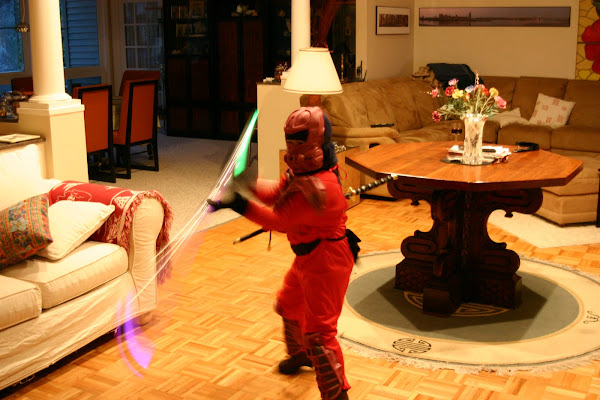

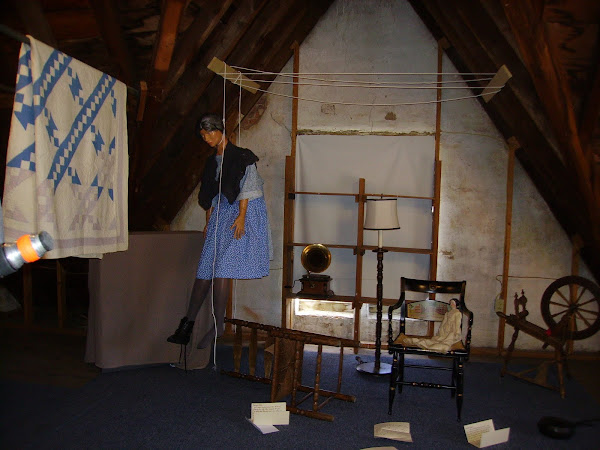
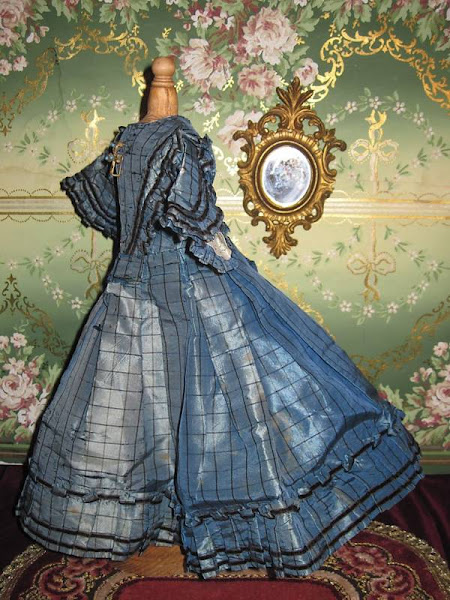wCWk~%24(KGrHqV,!h8Ew5GsnS3dBMUy3MzVPg~~_3.jpg)


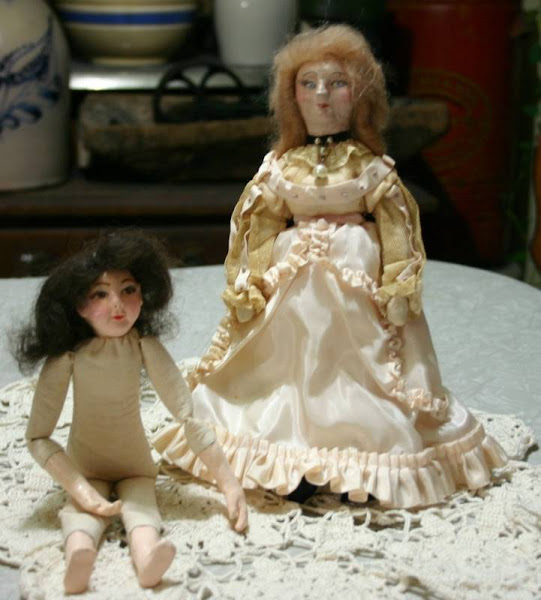









































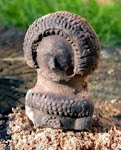
















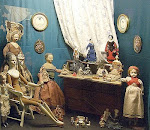



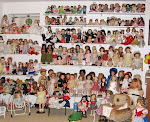
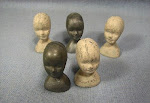



No comments:
Post a Comment